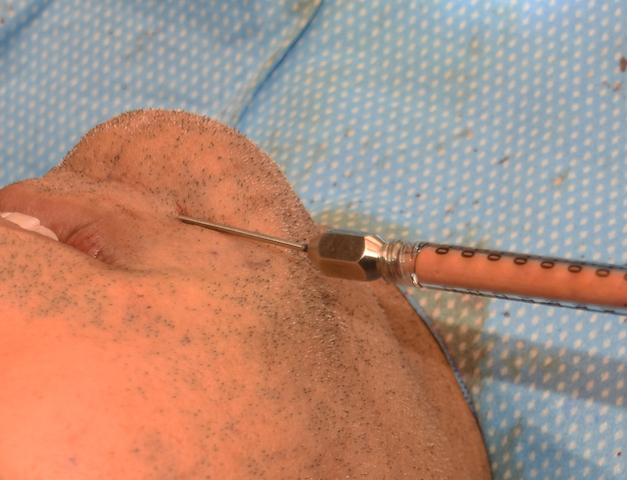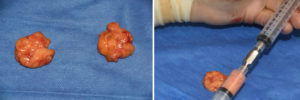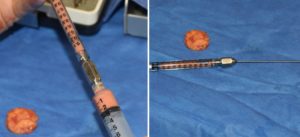Background: The buccal lipectomy is a well known facial defatting/cheek slimming procedure. Being the largest encapsulated reservoir of fat in the face, its surgical removal is always impressive given the sheer volume of fat removed. Most buccal fat pads average in the 3ccs range. Regardless of the facial slimming effect, most buccal fat pads are discarded and not ‘recyled’.
The buccal fat pad is a unique fat collection whose function has been ascribed to facilitate muscle movement by occupying a deep tissue space. It permits the unimpeded/gliding movement of the masseter muscle and the overlying muscles of facial expression. As a result it has a unique structure from more traditional subcutaneous fat with large fat globules, a deep yellow color and a vascular pedicle. While it has never been officially studied as a a donor source for free fat grafting, I have found it valuable for use in small injectable or en bloc fat grafting facial areas.
A unique area for fat grafting in the face is the labiomental fold. This is the indentation that naturally exists between the lower lip and the chin. It reflects the underlying attachment of the mentalis muscle to the bone. It is deeper in some people naturally and can be expected to get deeper with any form of chin augmentation. When fat grafting the labiomental fold, an injection technique is one method with the placement of the fat between the skin and the mentalis muscle in the subcutaneous space.
Case Study: This male was to undergo multiple facial procedures including a custom jawline implant as well as multiple facial defatting procedures. He was also bothered by his deeper labiomental fold which would get even deeper with the chin/jawline augmentation.
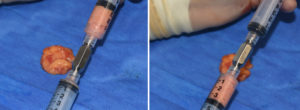
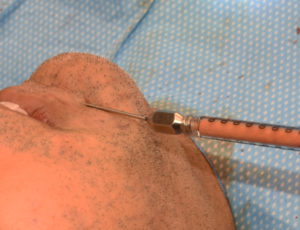
There are a variety of augmentation techniques and materials for the deep labiomental fold. Fat grafting is most commonly used because of its autogenous nature. The fat grafting can be done by either en bloc placement through an intraoral approach or by an injectable external technique…of which there are advantages and disadvantages with either approach. The recycling of a buccal fat pad, if there is an aesthetic indication for its removal, makes an argument for processing it for injection.
Case Highlights:
1) The buccal fat pad is a good source of fat for injectable grafting…if there is merit to its harvest.
2) Buccal fat can be processed into an injectate using a two-syringe preparation technique.
3) The labiomental fold can be lessened in depth by buccal fat injections with a good survival percentage.
Dr. Barry Eppley
Indianapolis, Indiana

